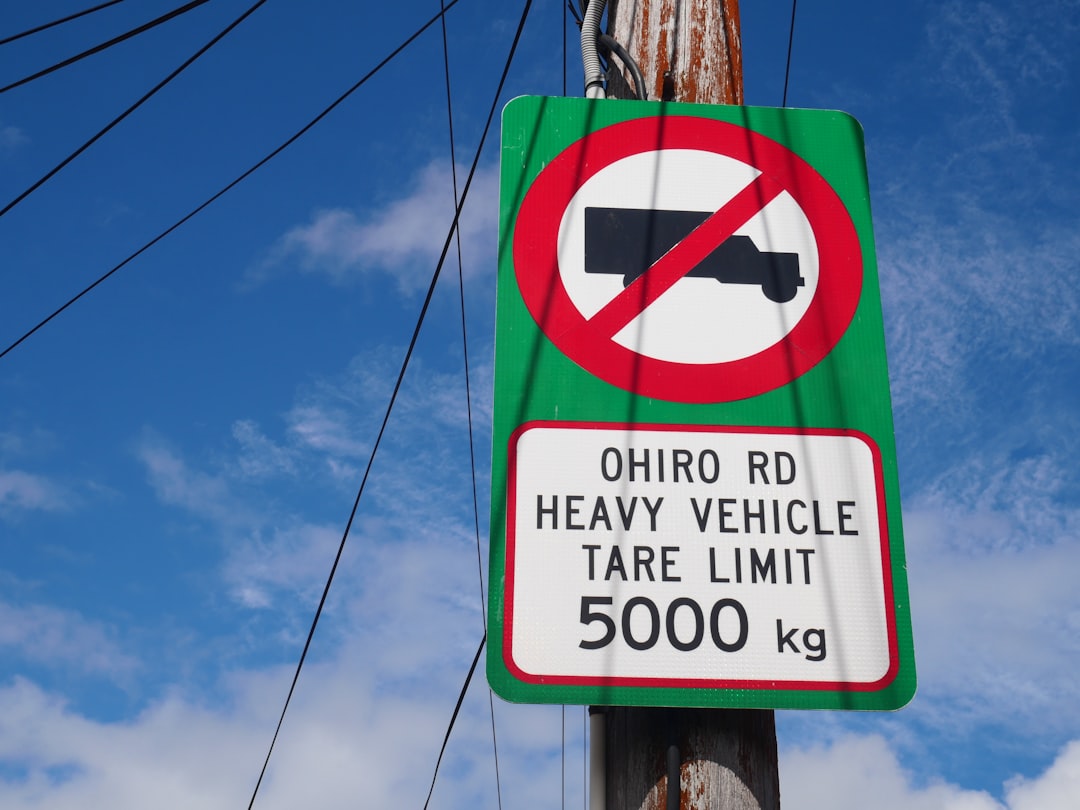Introduction
Have you ever looked out into your yard and noticed one of your trees leaning a bit too much? Not only can a noticeably tilted tree detract from the beauty of your property, but it can also become a safety concern. Trees might start leaning due to a variety of factors including uneven watering, poor soil conditions, or damage from storms. Fortunately, straightening a tree is a manageable task with the right techniques and a bit of patience. In this blog, we’ll guide you through the steps you can take to help your tree regain its upright position and continue to grow healthily. From assessing the situation to providing ongoing care after the straightening process, we’ve got you covered. Get ready to give your tree the support it needs and restore the natural beauty of your landscape.
Importance of Tree Straightening
 Image courtesy: Unsplash
Image courtesy: Unsplash
Straightening a tree is not merely about aesthetics; it is a crucial aspect of tree care. Ensuring your tree grows upright can affect its overall health and structural integrity. Here’s how aligning your tree can be fundamental:
Promoting healthy growth
A tree that grows straight is more likely to have a balanced distribution of sunlight, which is essential for photosynthesis. This balance ensures that all parts of the tree receive equal light, promoting even growth and development. Additionally, a properly aligned tree will have better air circulation through its branches and leaves, which can reduce the likelihood of disease caused by a damp, stagnant environment. This can increase the tree’s ability to absorb nutrients efficiently, leading to a healthier, more robust plant.
Preventing damage
An unbalanced tree poses a greater risk of falling or losing limbs, especially under the stress of high winds or heavy snow. Correcting the alignment of a tree while it’s young can help develop a strong trunk and root system, which are crucial for its stability. It also helps prevent property damage, injuries, or power disruptions if the tree were to fall. Additionally, a straight tree is less likely to experience stress in its branches and trunk, which can lead to splits and cracks that invite pests and diseases.
Methods for Straightening a Tree
There are several techniques you can use to help realign your tree’s growth. It’s important to choose the method that best suits the size of the tree and the severity of the leaning.
Staking
Staking is a common method for young trees with thin trunks. To stake a tree, follow these guidelines:
– Insert stakes into the ground at a 45-degree angle, away from the tree, on the opposite side of the lean.
– Attach flexible straps or tree ties to the stakes and the tree’s trunk. Place them two-thirds of the way up the tree to provide optimal support.
– Allow some movement as this helps strengthen the trunk.
– Remove stakes after one to two growing seasons to avoid over-dependence on the stakes, which can hinder natural growth strength.
Guying
Guying is similar to staking but is better suited for larger, more mature trees or those in particularly windy areas. The process involves:
– Placing three or more stakes in a circle around the tree, well beyond the root zone to avoid damage.
– Attaching strong wires or cables from the stakes to the trunk, using a broad, soft material to protect the bark.
– Adjusting the tension to correct the lean but allow some natural movement.
– Regularly inspecting and adjusting the wires as the tree grows.
Bracing
For trees with multiple trunks or weak joints, bracing can be an effective method. Bracing involves:
– Installing metal rods or wooden supports between trunks or major branches to redistribute the weight and reduce strain.
– Drilling holes to insert the rods securely, then securing them with nuts and bolts.
– Monitoring the bracing system periodically for adjustments as the tree grows and the structure changes.
Each of these methods can be highly effective, but it’s important to evaluate your tree’s specific needs and consult with a professional if you are unsure. Regular maintenance and timely removal of support systems ensure the healthy, natural growth of your tree.
Tools Required for Straightening
Stakes
To begin straightening a tree, you will need sturdy stakes. These are typically made of wood or metal and should be tall enough to reach at least a third of the height of the tree you are supporting. The diameter and material of the stakes depend on the size and weight of the tree. For smaller trees, wooden stakes are sufficient, but for larger or heavier trees, more robust metal stakes are recommended. Ensure the stakes are smooth to avoid damaging the tree bark when attaching them.
Guy wires
Guy wires provide the necessary tension to hold the tree in place and guide it as it grows straight. These should be made of a strong, weather-resistant material like steel cable or a similarly durable synthetic fiber. When selecting guy wires, choose coated options to protect the bark from abrasion and to prevent rusting. The length of the wire will depend on the distance between the tree and the stakes, as well as the height at which they will be attached.
Tree straps
Tree straps are used to attach the guy wires to the tree without damaging it. They are usually made of a soft but strong material like nylon or rubber. These straps should be wide enough to distribute pressure evenly around the bark. Velcro or buckle systems are often used on straps for easy adjustment and to ensure they can accommodate growth without girdling the tree as it expands in diameter.
Step-by-Step Guide to Straightening a Tree
Assessing the tree
The first step in straightening a tree is to assess its current condition and stability. Examine the tree for any signs of disease or damage, as these factors can affect its ability to support itself even after straightening. Check the soil around the tree for moisture content and stability—it shouldn’t be too dry or overly saturated. Determine the direction the tree is leaning and how severely, as this will influence your approach to straightening it.
Preparing the tree for straightening
Clear the area around the tree of any obstacles, such as rocks or plants that might interfere with the placement of stakes or guy wires. Soften the soil if it is compacted, to make driving the stakes easier and minimize root damage. If the tree is small and its root ball is exposed, you might need to reposition it gently in the hole before proceeding with the installation of supports.
Implementing the chosen method
Start by driving the stakes into the ground at a distance from the tree—a rule of thumb is about one-half to one-third the height of the tree, away from the trunk, in the opposite direction of the lean. Attach the guy wires to the stakes, then carefully loop the tree straps around the trunk, typically just below the lower branches. Fasten the guy wires to the straps, ensuring there is enough tension to correct the lean but not so much that it damages the tree or restricts natural movement and growth.
Monitoring the progress
After the tree has been straightened, it’s crucial to monitor its progress. Check the tension on the guy wires monthly, adjusting them if necessary to accommodate growth or shifting. Regularly inspect the straps to ensure they are not too tight, cutting into the bark, or too loose, reducing their effectiveness. This process might be necessary for a couple of seasons until the tree is stable enough to stand on its own. Finally, always keep an eye out for signs of distress or disease, and adjust your care routine to help the tree thrive in its upright position.
Tips for Effective Tree Straightening
Choosing the right time of year
Timing is critical when it comes to straightening a tree. The optimal time to begin the straightening process is during the dormant season, which typically falls between late fall and early spring. During this period, trees are not actively growing, which minimizes stress and allows for easier adjustment of their structure. Additionally, the wetter soil during these months can make it easier to adjust the tree’s position without causing damage to the root system. Avoid straightening during extreme weather conditions such as droughts or heavy freezes, as these can compromise the tree’s recovery.
Adjusting support as the tree grows
As trees grow, their weight and structure change, making it necessary to adjust the support systems used for straightening. Periodically check and adjust the stakes and ties to ensure they are providing the correct amount of support without constricting growth. It’s essential to allow some movement, as this can help the tree strengthen its own natural support systems. Typically, adjustments are needed every few months depending on the tree’s growth rate and the season. Always ensure that the materials used, such as tree ties, are flexible and do not cut into the bark of the tree.
Ensuring proper tension
Maintaining the proper tension in the support ties is crucial for straightening a tree effectively without causing damage. The ties should be tight enough to hold the tree in the desired position, but not so tight that they strangle or girdle the trunk. A good rule of thumb is to allow enough room for two fingers to fit between the tree and the tie. This setup provides support and stability while also giving the tree enough room to grow and expand. Regularly check the tension and adjust as needed, paying close attention during windy conditions or after significant growth spurts.
Common Mistakes to Avoid
 Image courtesy: Unsplash
Image courtesy: Unsplash
Using incorrect tools or materials
When straightening a tree, using the appropriate tools and materials is essential for both the health of the tree and the effectiveness of the straightening process. Avoid using materials that can harm the tree, such as metal wire or non-flexible ties, which can cut into the bark and damage the vascular system. Instead, opt for wide, soft materials like rubber or canvas straps. Also, ensure that stakes are made from durable, weather-resistant materials to prevent breaking or rotting, which could destabilize the support system.
Applying too much force
One common mistake in tree straightening is applying too much force. This can happen when stakes are driven too deep or when ties are pulled too tightly, which can severely stress or damage the tree. It’s important to remember that the goal is to gently guide the tree back to its vertical position, not to force it into place. Apply gradual adjustments and allow the tree time to adapt to its new position.
Negligently forgetting to check on progress
Regular monitoring is key to the success of straightening a tree. Neglecting to check on the tree’s progress can lead to over-tightened ties, insufficient support, or unnoticed damage from pests or weather. Make a schedule to inspect the tree’s condition and the support apparatus at least once a month. Adjust as necessary to accommodate growing conditions and changing weather, ensuring that the tree remains supported but not restricted. This ongoing attention will help ensure that the tree grows healthy and straight.
Conclusion
Correcting the alignment of a tree is essential for its health and stability, ensuring it can grow strong and withstand the elements. By using stakes, guy wires, or correcting the soil around the base, you can help a leaning tree regain its upright position. Remember, the process can take several months, so patience is key. Regularly monitor the tree’s progress and make adjustments as needed. With the right care and attention, your tree can thrive and enhance your landscape for years to come.


